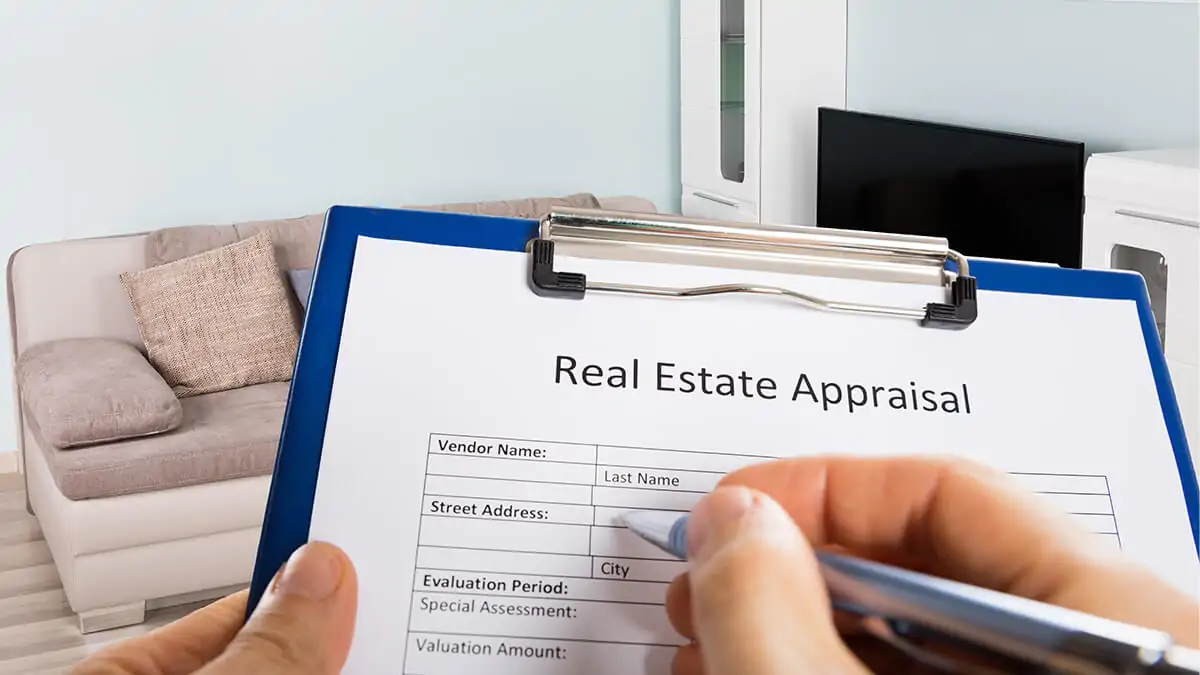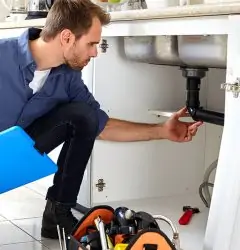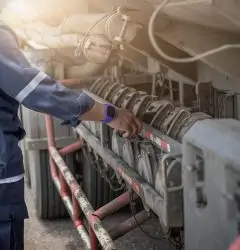09 Sep

Moving houses is not an easy task. There a few mandatory rules that must be followed before, during, and after a property has been rented out. These rules are set by the local law, and the landlords and tenants are expected to abide by them. For the safety of the tenants and landlords, the rented property must be inspected periodically to reduce the chances of any unforeseen events from happening. Rental property inspections can be conducted by using the rental inspection checklist, which allow you to carry out a thorough inspection of the property.
What is a Rental Inspection Checklist?
A rental inspection checklist is a tool used to ensure that the property is in good condition, before, during, and after, being rented out to a tenant. This checklist is used by landlords or property managers, who conduct a visual inspection of the property periodically, including the interior and the exterior of the property.
The rental property inspection is often carried out while the tenant is also present. This helps to keep the tenant in the loop regarding any issues or concerns suspected during the inspection.
Why should a Rental Inspection be Conducted?
Periodic rental inspections help you to maintain your property in a good condition, as well as keep a track of the condition of your property. Any damages or issues identified at an early stage are likely to cost less than the damage identified at a later stage, preventing problems down the road.
Furthermore, these inspections help to reduce the chances of any disputes between the landlord and the tenant, regarding the condition of the property. This is a good positive start to a professional relationship between the tenant and the landlord.
Additionally, the rental inspection checklist helps the landlord to document the existing condition of the house. If in the future, after the tenants have occupied the property, any damages are noted, the tenant can be held responsible for it. This also helps to reduce any chances of disputes between both the properties.
For tenants, the rental inspection checklist helps to reduce the risk of paying for damages that we there before they moved in. Upon moving out, regular inspections of the property help to reduce any security deposit refund issues.
This helps to save the tenant from any legal issues that may arise between the tenant and landlord. During the inspection, the tenant must take pictures of any damages or faults seen in the house as proof. Nothing should be moved into the house before the inspection is completed before moving in.
Once both the parties are satisfied and have carried out their due diligence, the lease agreement can be signed, and the completed rental inspection checklist is signed by both the parties.
Moreover, a copy of the rental inspection checklist should be attached to the lease agreement and should be kept safely until the time the tenant decides to move out. Once the lease documents and the inspection checklist have been signed, the house keys can be handed over to the tenants.
Types of Rental Inspection Checklists
The rental inspection checklist can be broadly classified into three checklists. These checklists help to make the moving in and moving out of the tenants a less stressful event for the landlord and the tenants.
The main aim of these rental inspection checklists is to record the condition of the rental property before, during, and after the tenants move out. These checklists are pretty thorough with the inspection and require you to assess the condition of the whole property, including the carpets, bathroom tiles, or any marks on the wall.
The three rental inspection checklists are:
1. Rental Property Inspection
The rental property inspection checklist is a broad checklist that covers the inspection of the rental property i.e. homes and apartments, in general. It gives a general idea of the condition of the rental property if it is in a lovable state or not. Every room of the property is checked, including walls, floors, ceilings, windows, door frames, etc.
It is recommended that these inspections should be carried out quarterly to check if the property is managed well by the tenants, while they are staying there. It also gives a clear idea of the efforts of the landlord or property manager, while space was not rented out.
To sum it all up, during the inspection of the rental property, you should:
- Note down the move in and move out inspection date and time
- Address
- Details about the inspector
- Details about the tenant
- Details about the property. Perform a thorough inspection of the dining room, kitchen, living room, bedrooms, bathrooms, stairways, hallways, basement, balcony, deck, patio, garage, yard, entryway, and all safety equipment (smoke alarms, carbon monoxide detectors, and fire extinguishers)
- Add comments
- Take photos of the identified damages
- Assign corrective measures through actions
- Complete the report with a digital signature
Apartment Rental Inspection Checklist
The apartment rental checklist, as the name suggests, is a checklist used to inspect apartments for rent. Generally, the landlord and the tenant perform this inspection together to ensure they both are on the same page, before the tenant moves in and when the tenant moves out.
Also, this inspection can also be performed quarterly, to ensure the tenants and landlords are dedicated to improving the overall condition of the apartment.
During the inspection, the following areas/objects must be inspected:
Exterior doors, windows, walkways, locks, and porches
The minute you enter into the apartment, you must inspect the door first. Check for any gaps around the edges, the light coming through the door, and not to forget, the lock of the door.
Addressing the gaps in the door is important because it will affect the heating and cooling system of the house. Air will escape through these gaps, causing the cooling or heating system to work harder, causing an increase in the utility bill.
For safety concerns, check the windows if they are properly installed or not. Check the window panes or any cracks or gaps. Also, open the windows to see if they are loose or if the locks are damaged. The window screens should be checked if they are in good condition- without any holes.
There should be no compromise on the security of the apartment. The first and foremost security measure is the locks of the doors and windows. You must check if they are functioning properly and are securely installed. A secured apartment reduces the chances of theft and damage to the property.
Moreover, the porches and decks cannot be excluded from the rental inspection checklist. They must be checked for any handrails and fences, that must be stable and secure.
The exterior wood or concentrate must be checked for cracks and water damage. Also, do not forget to inspect any trees around the apartment. This is important, especially if you are living in a hurricane-prone area.
Climate Control
Inspect and try out the heating and cooling system to ensure the air given out is of the appropriate temperature. Inspect the HVAC unit, and the water boiler too, to ensure they are functioning normally. For the safety of the tenants, the air filter and primary vent must also be inspected for any rust, debris, or damage. Inquire the landlord about the maintenance history of the system.
Electric
Inspect and try out every single electric outlet in the apartment. The easiest way to do so is to plug in your charger and see if the outlet is working or not. Make sure to check for any sparing or loosely fitted outlets. This could be a cause of a major fire hazard.
Moreover, inspect the switches too. Turn them on and off a couple of times, and check the dimmers too. Look out for any flickering of the light, which may indicate a big electrical problem that should be addressed.
Walls and Ceilings
Check the walls and ceilings of the bedrooms, bathroom, living room, dining room, and kitchen for any cracks, chips, or stains. Furthermore, check for mold and water damage signs on the walls, tiles, and floor. Water damage usually leaves stains and bubbles on the surface of the wallpaper.
Detecting water damage is essential because it helps to protect the structural integrity of the wall. Mold is a big problem in humid areas, especially in apartments that are not properly ventilated. These areas must be identified promptly and they should be cleaned.
Smoke and Carbon Monoxide Detectors
There should be fully functional smoke alarms and detectors in the kitchen and every bedroom, and they must be checked periodically. On the other hand, carbon monoxide alarms are not necessary for every apartment but can act as an extra step of security, since carbon monoxide can be fatal. If your apartment has a fireplace or a fuel-fired heater, having a carbon monoxide detector becomes mandatory.
Bathrooms
While inspecting the bathrooms, you must try to smell any peculiar odor. This peculiar odor could be indicating a mold or water issue, and professional help should be called for to fix this issue. Then, you should inspect the toilet seat to check if it is sturdy. Flush twice, to check if the flush is working properly, and to determine how long it takes for the toilet to reset. Moreover, check the area behind the toilet for any mold, water leakage, or cracks.
The bathroom inspection does not end here. The showers must also be inspected for adequate pressure and temperature adjustment. Once you turn off the water from the shower, note down the time for how long the water keeps on dripping.
Furthermore, you should check the water temperature and pressure at the sink too. Do not forget to examine the area under the sink for any mold, cracks, or any plumbing issues. Also, the bathroom cabinets must be inspected for any chipping, cracks, holes, mold, or any damage.
Kitchen
The kitchen has various types of equipment, such as a dishwasher, oven, stove, and refrigerator. Inspect all these equipment for proper functioning, and make notes if you see anything strange. All cabinets and drawers must also be inspected for any damages. One thing that must not be ignored is any excessive gas smell in the kitchen. Also, do not forget to examine the cabinets and drawers for any pests and animal droppings.
2. Tenant Move-in Inspection
The tenant move-in checklist is completed with the landlord or property manager and the tenant before the tenant moves into the house. Once the tenancy period is over, this checklist is compared to the move out checklist.
The tenant move-in inspection checklist is divided into:
General
This section is concerned with the condition of entrance doors, balcony, patio, exterior light, exterior GFCI outlet, intercom, fuse/breaker panel, weatherstripping, glazing, and insect screen on the entrance.
Hallway Vestibule
This section involves the inspection of the hallway. This includes the flooring, ceilings and walls, electrical switches and outlets, light fixtures, closet doors, hardware, rod and shelf, and smoke detector.
Living Room
The walls and ceilings, floor covering, windows, blinds, curtains, doors, light fixtures, lamps, furniture, moldings, and baseboards of the living room are inspected.
Dining Room
The floor and floor covering, walls and ceilings, light fixtures, windows and screens, and window coverings are inspected.
Kitchen
The kitchen must be inspected thoroughly for any damages or issues seen on the floor and floor coverings, walls and ceilings, doors and the locks, windows and screens, window coverings, light fixtures, cabinets and drawers, kitchen counters, stoves and burners, oven, range hood inside, outside and the fan, the refrigerator, dishwasher, sink and plumbing, and garbage disposal.
Bedroom
Inspect the floor and floor coverings, walls, and ceilings, windows and screens, window coverings, lighting fixtures, smoke alarm, doors, and locks must be thoroughly inspected.
Bathroom
Inspect the bathroom for any damage on the floor and floor coverings, walls and ceilings, counters and surfaces, windows and screens, window coverings, sink and plumbing, bathtub and shower, toilet, light fixtures, doors and door locks, drawers, and cabinets.
Apart from filling out the apartment move-in inspection checklist, you should even take pictures to keep them as proof of the damage inspected before moving in. This would prevent any deductions from your security deposit, at the time of moving out. The checklist has three options for you to choose: Good, Needs Action, and N/A. Whatever you feel applies to the condition of the area being inspected, you tick that option.
How do you get your property ready for move-in?
Before the tenant moves in, the landlord or property manager and the tenant, inspect the property for any damages and faults. Once the rental inspection checklist has been filled, a copy of it is attached to the tenancy contract. Once the document is viewed and signed by both the parties, the tenant can move-in.
3. Move Out Inspection
Once the tenancy period is over, the tenant and the landlord or property managers, inspect the property for any damage done during this tenancy period. This checklist serves as a formal agreement between both parties regarding the damage of the property. Just as the inspection was carried out before the tenants moving in, the same type of inspection would be carried out again before the tenants move out.
The move out inspection checklist consists of the following areas:
General
This section is concerned with the condition of entrance doors, balcony, patio, exterior light, exterior GFCI outlet, intercom, fuse/breaker panel, weatherstripping, glazing, and insect screen on the entrance.
Hallway Vestibule
This section involves the inspection of the hallway. This includes the flooring, ceilings and walls, electrical switches and outlets, light fixtures, closet doors, hardware, rod and shelf, and smoke detector.
Living Room
The walls and ceilings, floor covering, windows, blinds, curtains, doors, light fixtures, lamps, furniture, moldings, and baseboards of the living room are inspected.
Dining Room
The floor and floor covering, walls and ceilings, light fixtures, windows and screens, and window coverings are inspected.
Kitchen
The kitchen must be inspected thoroughly for any damages or issues seen on the floor and floor coverings, walls and ceilings, doors and the locks, windows and screens, window coverings, light fixtures, cabinets and drawers, kitchen counters, stoves and burners, oven, range hood inside, outside and the fan, the refrigerator, dishwasher, sink and plumbing, and garbage disposal.
Bedroom
Inspect the floor and floor coverings, walls, and ceilings, windows and screens, window coverings, lighting fixtures, smoke alarm, doors, and locks must be thoroughly inspected.
Bathroom
Inspect the bathroom for any damage on the floor and floor coverings, walls and ceilings, counters and surfaces, windows and screens, window coverings, sink and plumbing, bathtub and shower, toilet, light fixtures, doors and door locks, drawers, and cabinets.
Just like the move-in checklist, the move out checklist also has the same divisions. To identify any damages done during the tenancy, this checklist has to be finished. It also provides you with the same options to describe the situation of a given area- Good, Needs Action, and N/A.
What is EcoDocs and How can I Use it for the Rental Inspection Checklists?
EcoDocs is a cloud-based CMMS software, powered by Folio3, which helps to organize, track, and schedule your maintenance tasks. It makes data collection easy and accurate for maintenance managers. You can easily track and manage your data without any hassle.
Since EcoDocs helps in the automation and scheduling of your maintenance tasks, you can use Ecodocs to help manage all your rental inspection checklists from one dashboard. You would not have to struggle with a countless number of documents; all the documents of every tenant would be stored in one place, making it easy for you to track and manage your checklists.
As it is recommended that the rental inspection checklists should be conducted quarterly, you can get reminders from EcoDocs to conduct the home inspection for renters. EcoDocs would be a great investment to help manage all your rental property maintenance checklists.




Ecodocs